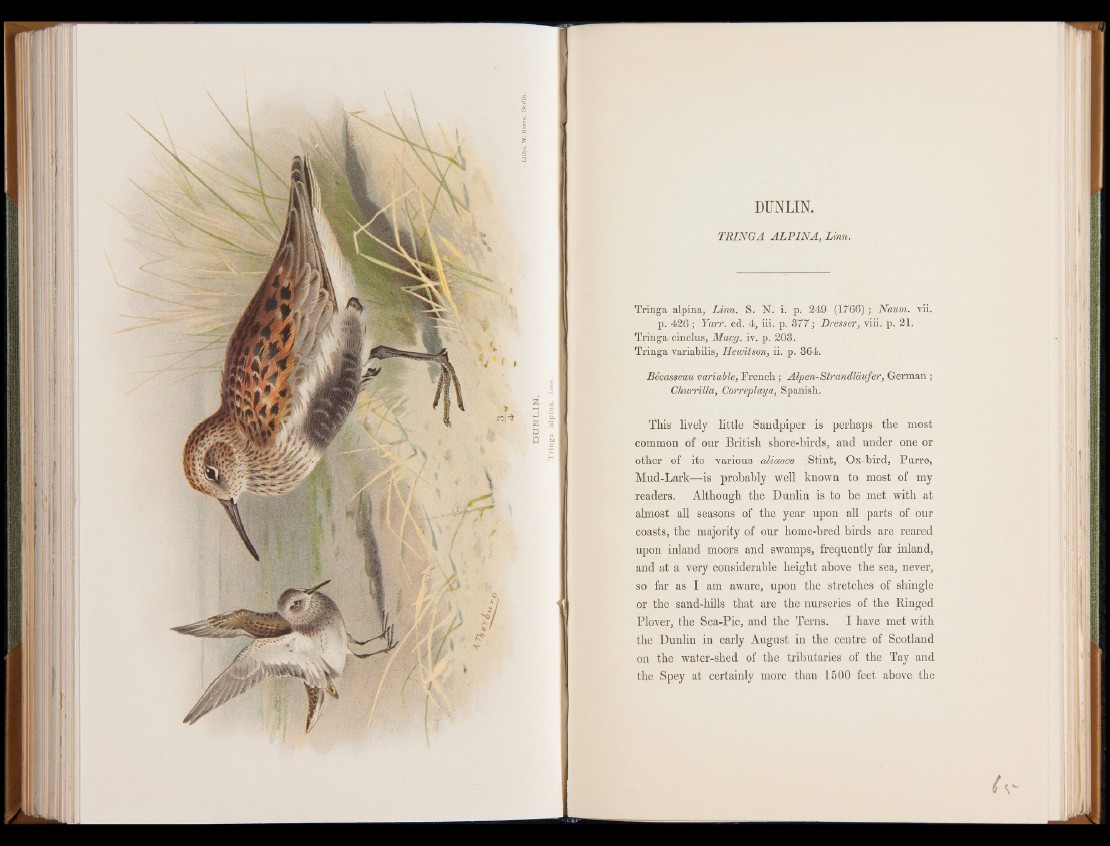
fol^
D U N L IN .
DUNLIN.
TRINGA ALPINA, Unn.
Tringa alpina, Unn. S. N. i. p. 249 (1766); Naum. vii.
p. 426; Yarr. ed. 4, iii. p. 377; Dresser, viii. p. 21.
Tringa cinclus, Macg. iv. p. 203.
Tringa variabilis, Hewitson, ii. p. 364.
Becasseau variable, French; Alpen-Strandlaufer, German;
Churrilla, Correplaya, Spanish.
This lively little Sandpiper is perhaps the most
common of our British shore-birds, and under one or
other of its various aliases—Stint, Ox-bird, Purre,
Mud-Lark—is probably well known to most of my
readers. Although the Dunlin is to be met with at
almost all seasons of the year upon all parts of our
coasts, the majority of our home-bred birds are reared
upon inland moors and swamps, frequently far inland,
and at a very considerable height above the sea, never,
so far as I am aware, upon the stretches of shingle
or the sand-hills that are the nurseries of the Ringed
Plover, the Sea-Pie, and the Terns. I have met with
the Dunlin in early August in the centre of Scotland
on th& water-shed of the tributaries of the Tay and
the Spey at certainly more than 1500 feet above the
1 II
(